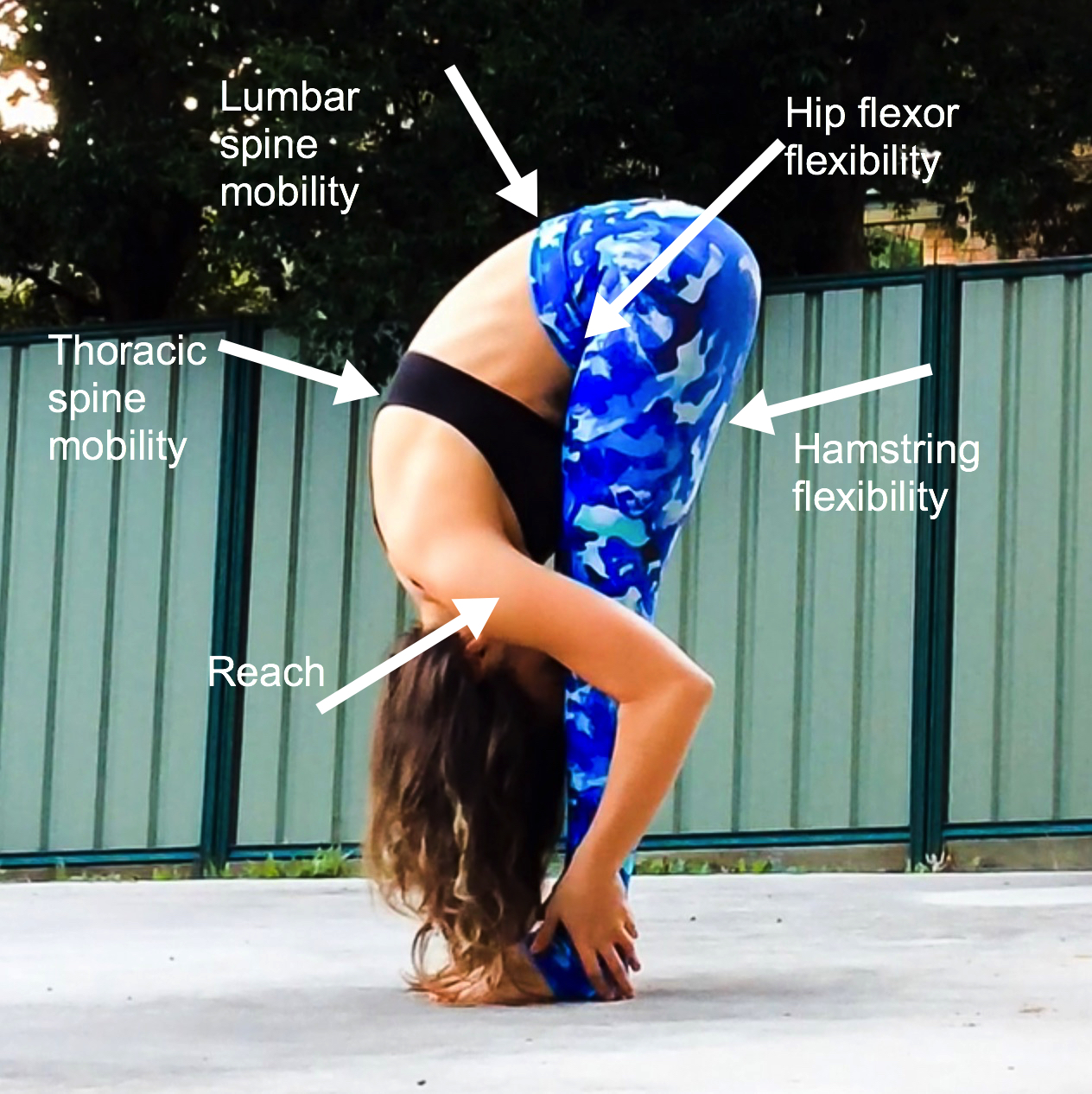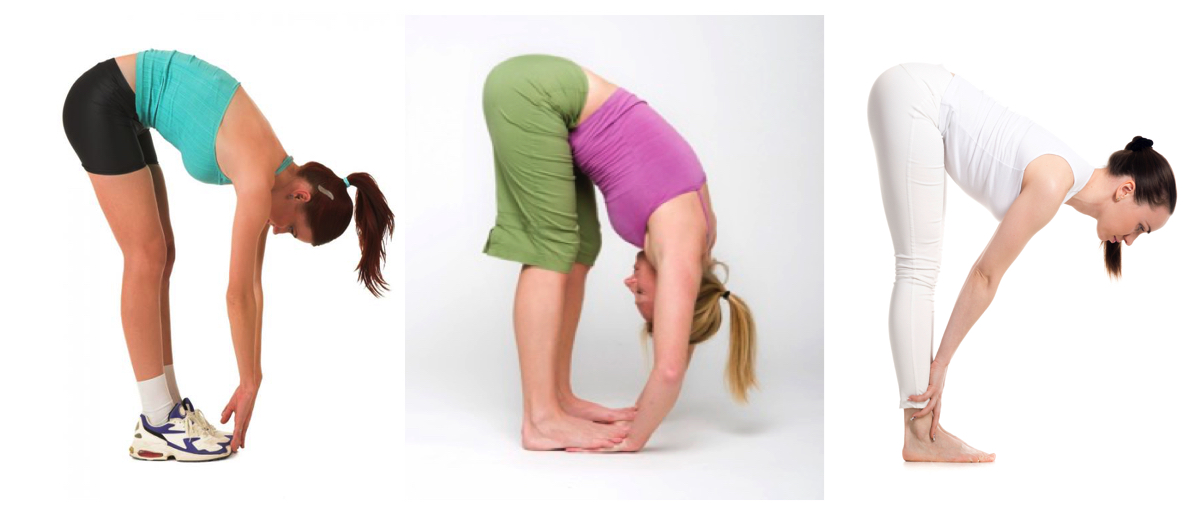Touching your toes is often seen as some sort of reflection of how athletic / fit / sporty you are. I’ve noticed people are either very proud when they can touch their toes, or they seem a little embarrassed when they can’t. So I guess I am either about to burst your bubble, or make you feel a whole lot better about yourself!
How do we touch our toes?
Touching your toes is about much more than just hamstring flexibility. It usually requires a combination of:

Some people use a lot of one thing or a little of everything and, as a result, touching your toes can look very different from one person to the next:

So why can some people touch their toes whilst other can’t?
Genetics
Unfortunately for some (and fortunately for others), good old genetics do play a role. It’s not necessarily an excuse (even though I use it as one regularly), but it can mean that some people have to work much harder at touching their toes than others.
Work position
The positions we spend our time in can have a huge impact on our flexibility and mobility. Spending a lot of time sitting at a desk often causes adaptive shortening of the hip flexors and hamstrings, as well as reduced mobility in the spine. This just means most people will have to regularly counteract these positions with stretches & movement to have a chance at touching their toes.
Practice
What you do outside of your job is also really important. If you practise a lot of yoga, Pilates or stretching, you are more likely to be able to touch your toes. This doesn’t mean you’re necessarily fitter / more athletic, it just means that your body is reminded more regularly of how far it can move.
Injury
Some injuries will get in the way of you touching your toes, especially lower back (disc) injuries, sciatic nerve issues and hip pain / arthritis.
So should we all aim to touch our toes?
Not necessarily! Whilst touching your toes is a great measurable goal when it comes to mobility, it’s not the be-all, end-all. Instead, we should all aim to move our bodies regularly and aim to use as much range of movement as we can. This is a much better goal and will help to:
- reverse the effects of all of the static positions and poor postures we use during the day
- reduce risk of injury
- reduce pain and discomfort
- optimise our health and wellbeing
To work on your mobility
Take micro breaks
Set a reminder on your phone to get up from your chair / go for a walk / do a few stretches to break the cycle of sitting and poor postures
Do a few stretches before bed
Wind down before bed by lying on the floor and doing a few gentle stretches
Do yoga or Pilates
Even one class per week that focuses on flexibility and mobility can make a huge difference and give you ideas on things to do at home
Get your very own mobility program
Organise an appointment with us so that we can assess your body and design a program just for you! This is especially important if you have pain / injury that seems to get in the way.
If you’re looking for more of a generic, structured flexbility program, check out this Self Taught Yogi’s Flexi-fit e-guide.
Recommended reading from Glow
Should I stretch a sore muscle?
Yoga vs Pilates – which one’s right for me?
What exactly is the pelvic floor and how do I keep mine strong?
